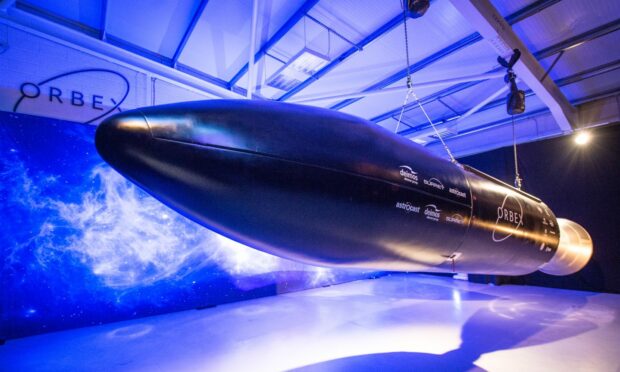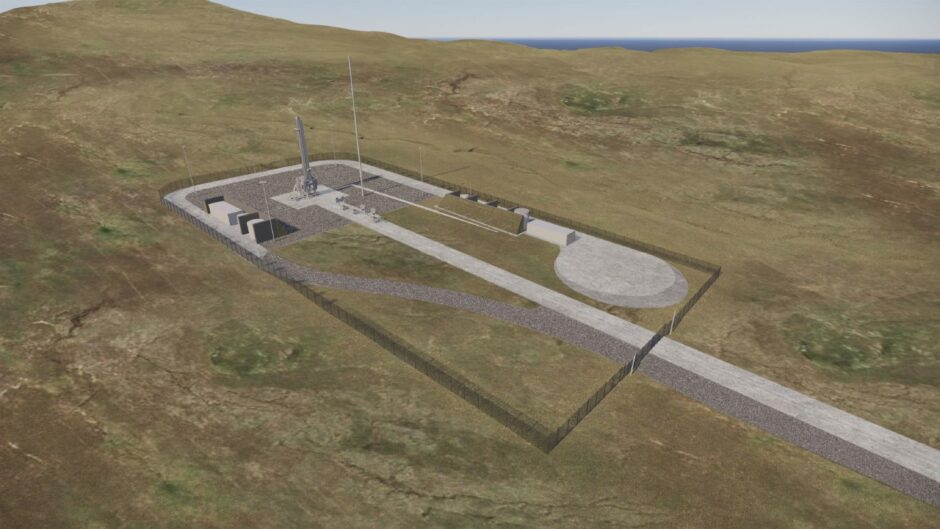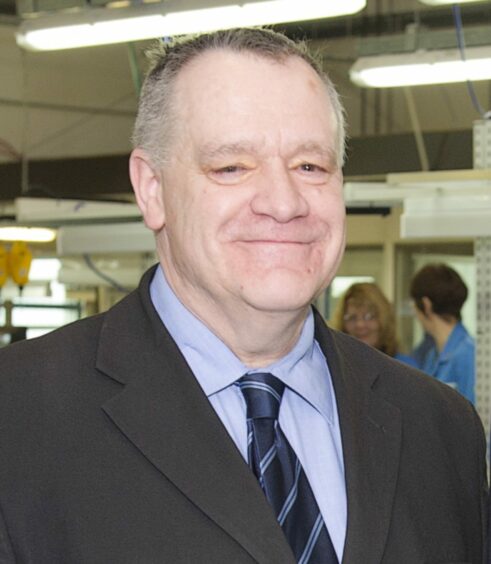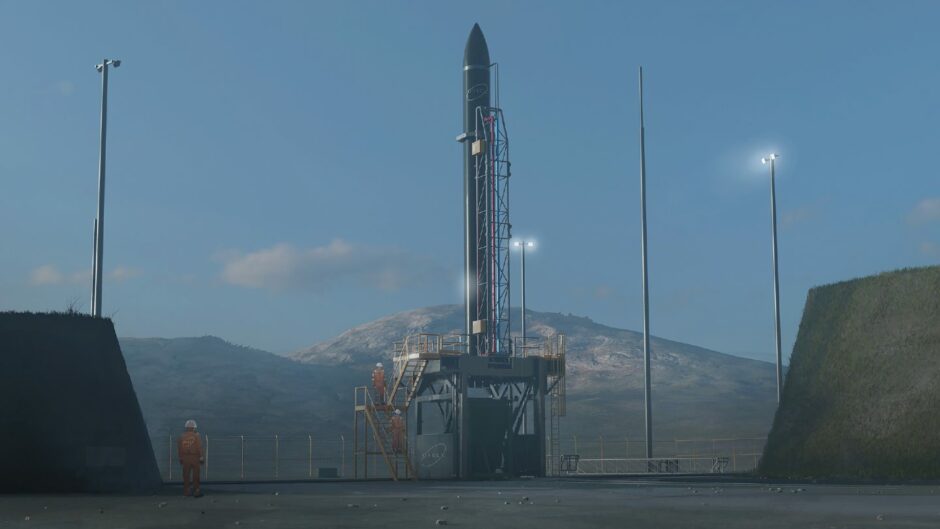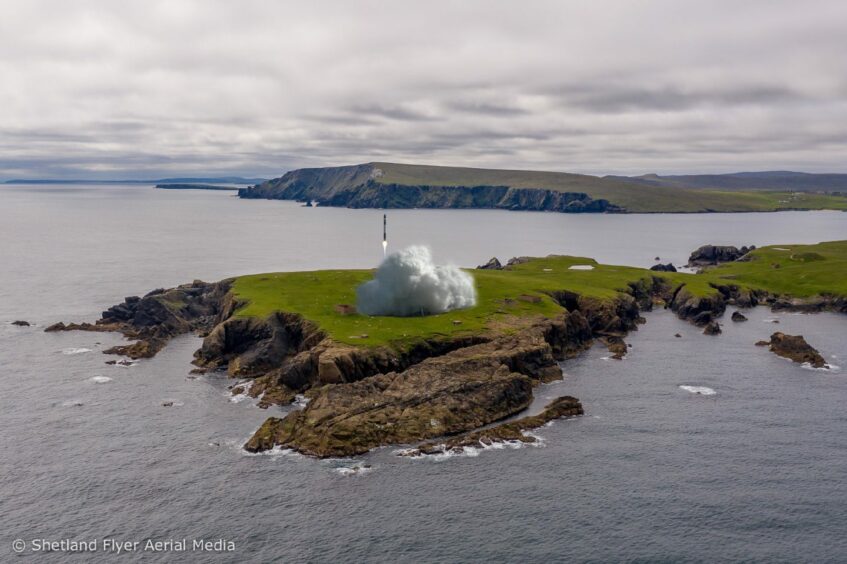The Highlands and Islands are experiencing their own mini space race, says Peter Ranscombe.
It’s just typical – you wait decades for a spaceport to turn up and then three come along at once.
Plans are under way to build launch sites for rockets at three locations in the Highlands and Islands – on crofting land on the A’ Mhoine peninsula in Sutherland, on a former air force base on Unst, in Shetland, and at Scolpaig Farm on North Uist.
Further south, Machrihanish, near Campbeltown, and Prestwick Airport’s giant runway also have projects afoot.
There’s definitely an advantage to Scotland having more than one spaceport.”
Matthew Archer, commercial space director, UK Space Agency.
Shetland, Sutherland, and North Uist would all be vertical launch sites, with rockets flying straight up into the air as they do on the television pictures from Nasa’s launch site at Cape Canaveral in Florida.
Machrihanish and Prestwick would be horizontal sites, with rockets getting piggybacks off the ground on planes before blasting through the atmosphere.
All five projects are part of efforts for Scotland to capture a £4 billion share of the global space market.
But do the Highlands and Islands really need three spaceports?
“There’s definitely an advantage to Scotland having more than one spaceport because each one is designed to fill a slightly different requirement,” argued Matthew Archer, commercial space director at the UK Space Agency (UKSA).
“They each have their positive points and areas of differentiation, allowing them to tackle a growing segment of the space sector.”
Mr Archer said the market for launching smaller satellites had grown from 1% of the space sector a decade ago to 10% currently, adding that Scotland was already the biggest producer of small satellites outside the US.
Sufficient demand
“We’re confident there’s definitely enough orbital demand for Sutherland and Shetland, and we’re doing more research into the market for sub-orbital launches, which is the Western Isles’ niche,” he said.
Mr Archer also pointed to the potential for companies in the north to join the spaceports’ supply chains.
He pointed to the German rocket maker HyImpulse, which carried out a series of engine tests at the former Scatsta airfield in Shetland earlier this year.
He added: “A great example was HyImpulse, which was recently building its test stand in Shetland but couldn’t ship across a part from Europe.
“The spaceport approached Ocean Kinetics, a Shetland company that works in the oil and gas and marine sectors, and it was able to supply and install the part within 48 hours.”
The emergence of the Highlands and Islands’ space sector has been a slow burn.
Project director Roy Kirk and his colleagues at Highlands and Islands Enterprise (HIE) began working on plans for Space Hub Sutherland in 2014, when UKSA started looking at horizontal launch sites.
After reading a report into the potential for a vertical launch site in the Dounreay area, in Caithness, Mr Kirk spotted an opportunity and spoke to crofters on the A’ Mhoine peninsula.
“They were surprised, I think it’s fair to say,” Mr Kirk said, adding: “But it’s a great opportunity for economic development in the area.”
In 2017, UKSA invited bids for partnerships between potential launch sites and companies capable of launching rockets.
At the following year’s Farnborough air show, the agency announced two bids from Space Port Sutherland, as it was called then, would receive funding.
Danish billionaire landowner Anders Povlsen, who is also a financial backer of the Shetland spaceport project, requested a judicial review after Highland Council granted planning permission, but his arguments were dismissed by the Court of Session.
The Scottish Land Court also had to give permission for a change of land use on the crofts.
Despite the legal hurdles, the project remains on course to start construction early next year.
Orbex, the Forres-based rocket manufacturer that will use the Sutherland site, began building a test launch pad at Kinloss, in Moray, earlier in December.
Motive Offshore Group, based in Boyndie, near Banff, won the contract to construct the test pad.
In Shetland, US aerospace giant Lockhead Martin and space specialist ABL Systems are getting ready to launch UKSA’s £40million Pathfinder rocket next year.
Scottish rocket company Skyrora has also struck a multi-launch deal over the next decade with SaxaVord Spaceport to send its 56-tonne XL rocket into orbit. This project is also aiming a take off in 2022.
While still waiting for planning permission to start building the rocket launch pad itself, SaxaVord UK Space Port owners Frank and Debbie Strang have pressed ahead with other facilities at their Lamba Ness site, on Unst, which employs 24 people.
Their ground station is already receiving data from passing satellites, while the centre is forging links with local communities, including through its work with schools.
The Strangs also plan to build Eden Project-style tourist accommodation on Unst.
Mr Strang, chief executive of SaxaVord UK Space Port, said: “We are in constant dialogue with the relevant public sector agencies.
“Historic Environment Scotland has been consummately professional and objective in its assessment of our application and we expect a planning decision over the next four weeks or so.
“In the meantime, to ensure there is no delay to either our construction programme or our operational activities, we are working on a daily basis with clients, contractors and the supply chain to ensure we hit the ground running in the new year.”
Mr Strang said he had “no worries” about meeting prospective dates for both orbital and sub-orbital launches.
He added: “Shetland Islands Council has instigated a very proactive space project board with several subcommittees, including education and science, technology, engineering and mathematics (Stem), and economic development.
“It is charging ahead with lots of initiatives, demonstrating the impact the space economy is already having on the Shetland economy.”
All systems go for Hebridean take-off
Plans are also progressing in the Outer Hebrides, where Western Isles Council unveiled proposals in 2019 to build a launch site at Scolpaig Farm on North Uist.
The Spaceport 1 project also involves HIE, QinetiQ – which was spun out from the Defence Evaluation and Research Agency at the Ministry of Defence in 2001 and floated on the London stock market in 2006 – and UK-based consultancy Commercial Space Technologies.
Explained: The complicated countdown to rocket launches in the Highlands
Following objections to the project, the council has spent the past two years carrying out environmental impact assessments ahead of potentially opening the site next year.
Its Spaceport 1 consortium carried out a commercial test launch from Benbecula Airport in August, together with Norfolk-based Gravitilab Aerospace Services.
